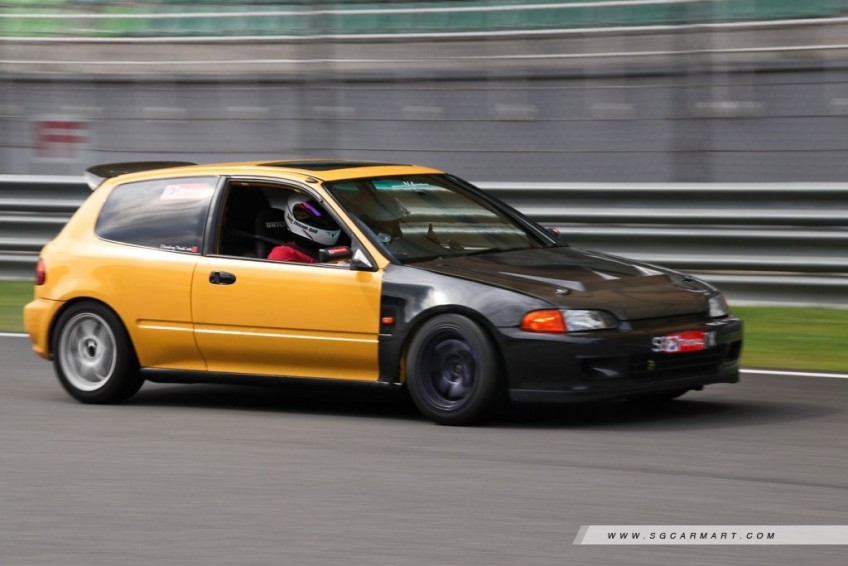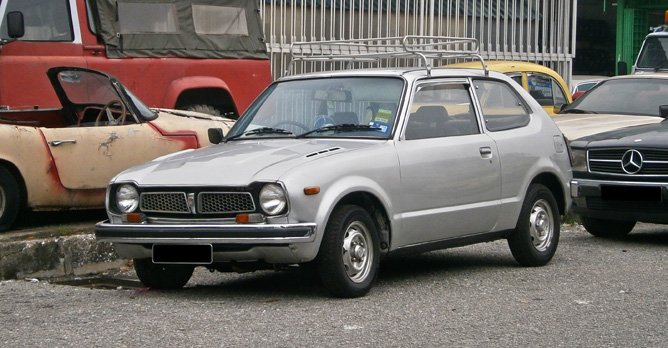Why is the Honda Civic VTi/SiR (EG6) considered a motoring icon?

If you have $80,000 in your hand, would you rather buy a PARF car such as a three-year old Mitsubishi Attrage , or would you choose to go for a 30-year old Honda Civic ? What if I told you that many car enthusiasts would rather go for the latter? You might find it difficult to understand why someone would want an old and likely problematic car over a much newer one, and that is where this article comes in handy. Read on and you will find out just why such an old car is getting so much love.
Introduced in 1991, the fifth generation Honda Civic, bearing the chassis code of EG and EH (in Singapore), was available in various trim levels and engines, along with a sedan and hatchback body style. In comparison to the fourth generation Civic that it replaces, the EG Honda Civic had its predecessor's sharp edges rounded off to give way to a much sleeker design.
Unsurprisingly, the hatchback with the most powerful engine variant turned out to be the most sought after version, and that is the Honda Civic VTi or SiR (Japan-only trim level) powered by the B16A engine, bearing the chassis code of EG6.
Engine: Honda B16A 1.6-litre Twin-Cam Naturally Aspirated with VTEC
Horsepower: 160bhp
Torque: 150Nm
Drivetrain layout: Front-engine, Front-wheel drive

The first-generation Honda Civic was an economical subcompact car that was later offered with Honda's innovative Compound Vortex Controlled Combustion (CVCC) engine.
The CVCC technology allowed the engine to be more efficient while achieving a more complete combustion. It also resulted in cleaner emissions that enabled the Civic to meet the Japanese and USA emissions standards in the 1970s without a catalytic converter.

Further down the line, the famous B16 engine was introduced with the fourth generation civic.
Honda's B-series were the original engines that came with VTEC (Variable valve Timing and Electronic lift Control), the technology that most car enthusiasts associate the brand with.
With the success of the engine, the B-series continued to be the range-topping engine option for the fifth (EG) and sixth generation (EK) Honda Civic.

Thanks to its sporty design, powerful engine and tuning potential (Honda Civics have always been involved in motorsports), the Civic EG is a popular choice for car enthusiasts in Singapore. During its era, a Civic with a B16A engine was among the most powerful cars you could get in the 1.6-litre category.
Backing its potential as a performance car is the Civic's success in motorsports — like with its predecessors, Honda actively participated in touring car racing within Japan with the Civic EG.

Introduced in 1992, the Civic EG6 SiR hatchback touring car had a B16A engine that was tweaked to produce more than 230 horsepower, allowing it to dominate the competition, and eventually nabbing the 1993 Japanese Touring Car Championship win.
It's clear by now that the engine has a huge part in the allure of the Civic. However, the engine isn't the only component that made the Civic such a sought-after performance car.
There are many factors other than power when it comes to a performance car — things like kerb weight, chassis stiffness and suspension geometry, plays a huge part as well. The Civic EG was a lightweight hatchback that weighs just over a tonne, and it also has multi-link suspension all round, with double-wishbone front suspension instead of the common Macpherson struts.
The favourable geometry of the suspension design, along with a rather stiff chassis and its low weight, made the Civic a nimble and agile car to handle.

With class-topping power, low weight and favourable suspension design, the Civic EG was one of the best front-wheel drive compact hatchbacks that the average driver can get their hands on.
1991 is more than 30 years ago, and yet the Honda Civic EG6 remains to be an enthusiast favourite, and the dream car of many.
While its performance and motorsport credentials made it the enthusiast choice when it was still rather new, a huge part of the Civic EG6's unyielding popularity lies in its aftermarket support, as well as its prominent position in car culture.

To date, popular tuning houses specialising in Honda cars, such as Spoon Sports and J's Racing, are still producing and selling aftermarket performance parts, exterior pieces and other components for these cars.
Despite its age, the Civic EG6 continues to be a car that you'll see on social media, car shows, track days and motorsports events, with a strong following, all thanks to strong aftermarket support.
The Civic EG has also been portrayed in games such as Gran Turismo, and was also driven by a character in the famous Initial D manga and anime series.

But many may also be attracted to these cars due to how they are the weapon of choice for the illegal street racers in Osaka, Japan, known as the Kanjozoku. Often seen prowling the Osaka highway are cars such as the Civic EG6 with loud exhausts, cutting in and out of traffic, treating the roads as their own race track and playground. The reason for this is due to the excellent cost to performance ratio that these cars offer — which is also why these cars are so popular here!
Thinking about buying one, then? Not so fast! Yes, the Civic EG6 is an amazing car, but before you take the plunge, you should do more research. After all, the upkeep and maintenance of a 30-year old car might prove to be an issue.

Points that you need to take note of would be the parts availability, especially when it comes to the mundane pieces, such as interior panels and trim pieces, as well as body panels.
You'll need to expect extended downtime in situations where parts have to be sourced.
An old car like the Civic EG6 might also not live up to your expectations if you enjoy the comfort and amenities of modern cars.
So, before you dive in and drive off with one, be sure to go for a test drive, or at least have a ride in the car to have a better feel of everything.

But if you are like me, and love the design and the raw, distinct character of the performance cars of yesteryears, you can check out the ones available in the market, and hopefully close the deal on one of these JDM classics right away. Be quick, there's only three units in the market right now!
ALSO READ: Over 40 McLarens gather at Gillman Barracks to celebrate McLaren60 in style